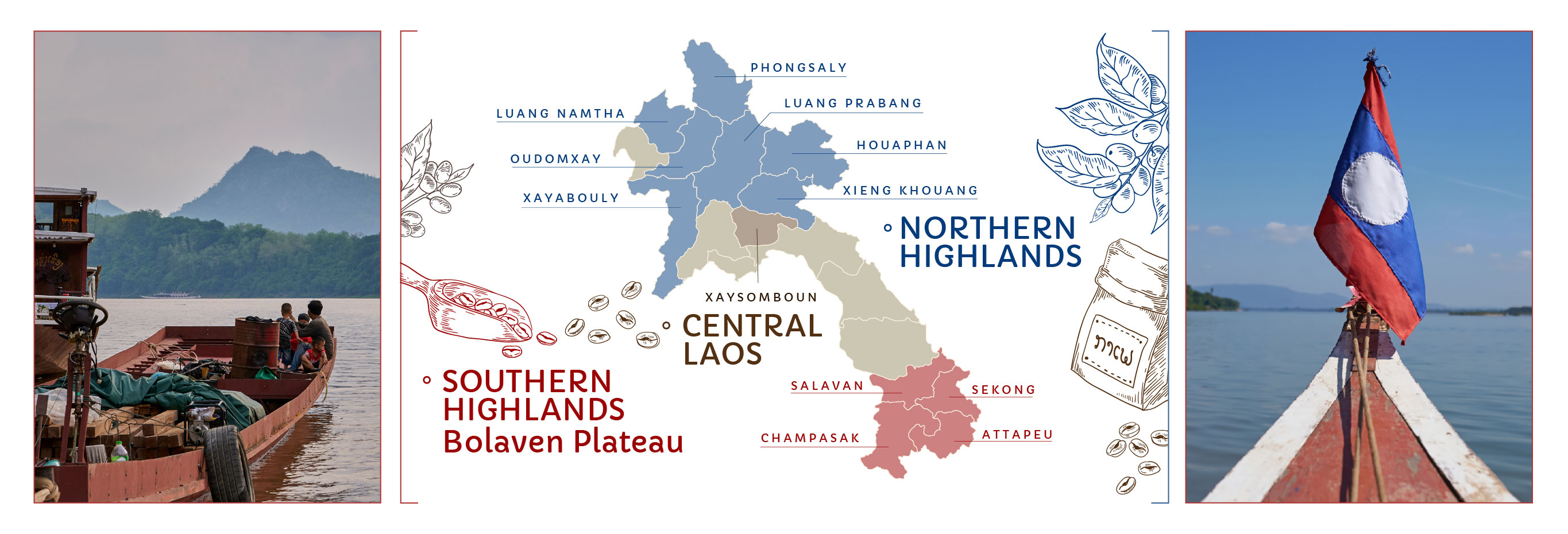Northern Highlands
Coffee in the Northern Highlands
The coffee sector in Northern Laos, especially in the provinces of Luang Prabang, Houphan, Phonsaly, Luang Namtha, and Xieng Khouang, has grown significantly, increasing its share of the national production from 0.1% to 3.6% between 2009–2018.
This growth is supported by initiatives from the French Government and the United Nations, including a notable program by the United Nations Office on Drugs and Crime (UNODC).
This UNODC program helps Lao farmers to transition from opium cultivation to cash crops like coffee. It includes supporting new coffee farmers from the north to learn from established growers in southern Laos.
The Northern Highlands’ elevation of 800–1,200 metres is ideal for Arabica cultivation.
A shift to sustainable agroforestry has improved coffee quality and reduced environmental impacts. Increased incomes for farmers helps to address poverty and lack of resources.
However, challenges in transport and processing due to the area’s remoteness emphasize the need for ongoing infrastructure improvements.
Coffee cultivation is crucial for local economic development and sustainability, requiring continuous infrastructure and practice enhancements to maintain growth and strengthen global market competitiveness.
Key attributes of the northern provinces’ coffee sector
Elevation and climate: The mountainous terrain in these provinces is ideal for Arabica coffee cultivation, with altitudes of 800–1,200 m above sea level. These elevations provide the optimal temperature and rainfall for growing high-quality Arabica beans.
Poverty and development challenges: The provinces face significant socio-economic challenges due to harsh natural conditions and limited infrastructure. Coffee cultivation is identified as a key strategy to improve livelihoods and reduce poverty, capitalizing on the region's natural agricultural strengths.
Agricultural practices: Historically, reliance on slash-and-burn farming caused considerable environmental harm. There is now a move towards sustainable coffee cultivation in agroforestry systems, which helps conserve the environment and maintains the viability of coffee production.
Market and infrastructure limitations: The remoteness of the Northern Highlands creates difficulties in market access, with inadequate infrastructure impacting the timely transport and processing of coffee cherries. Enhancing infrastructure is crucial to improve coffee quality and marketability, ensuring better economic returns for local communities.
Coffee cultivation is a transformative force for economic development and environmental sustainability in Laos’ northern provinces. Continued efforts to improve infrastructure and adopt sustainable agricultural practices are essential for the growth and competitiveness of the region’s coffee sector on a global scale.



